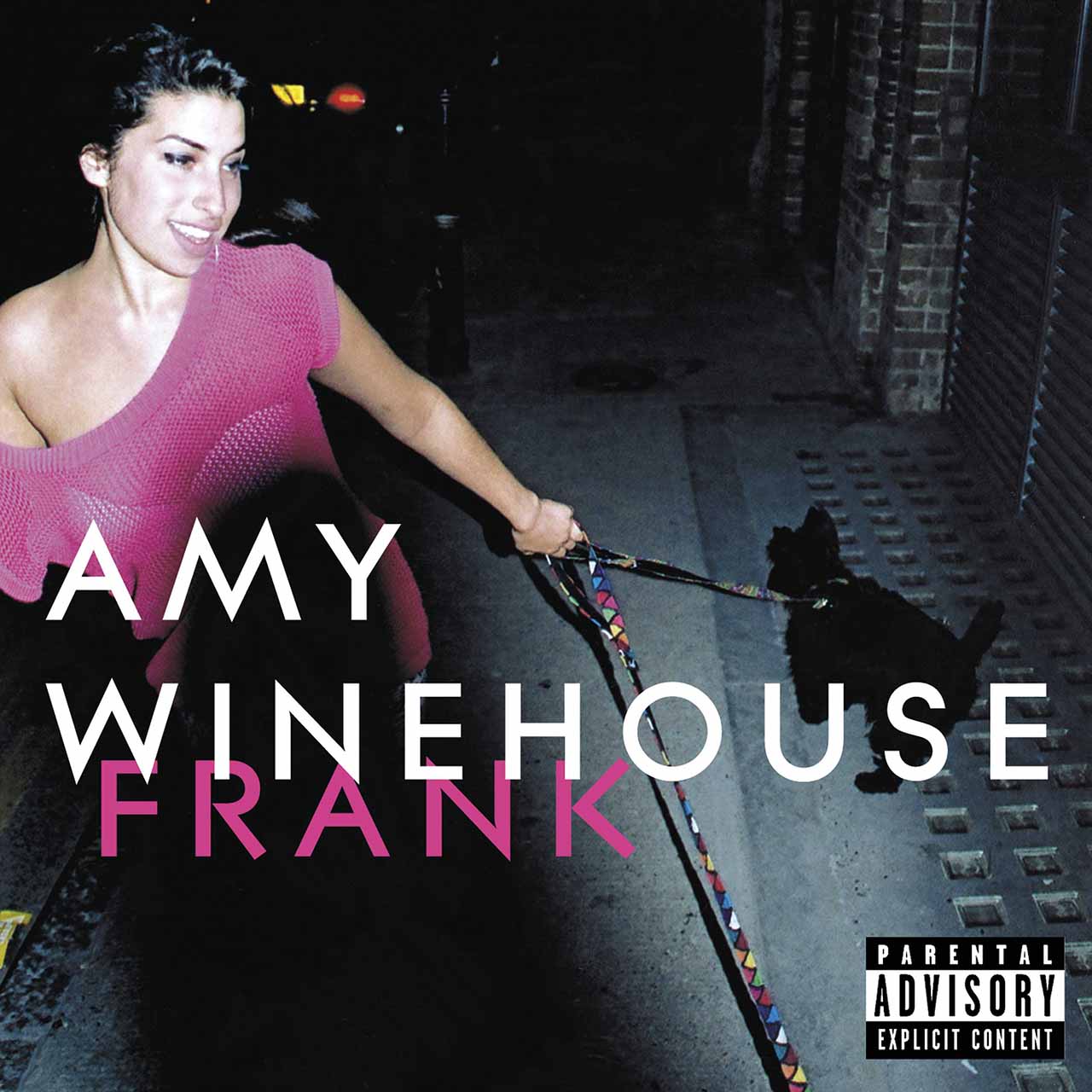Just two albums. For all the adoration, bother, love, and trouble, Frank represents about half of Amy Winehouse’s life’s work. We had best make the most of it.
Luckily, that’s not difficult: there is plenty here to keep us occupied. Plenty to adore, to bother us, to love, and feel troubled by. Right from the start, even at the raw age of 19, when she was recording this record, Amy dug deep, and for real.
Listen to Amy Winehouse’s Frank on Apple Music and Spotify.
The opening few notes of jazzy improvisation tell the world that this album was different. Not that the world was quite ready for it. Frank attracted attention – some diverse – but the album was not a sensation when it was released, on October 20, 2003. It took four months to sneak up to No. 13 in the UK album chart before it slipped down again. That would change, eventually, but only for the saddest of reasons. But Frank does not entirely present the Amy Winehouse of legend; despite confronting emotional issues, love pains, dissatisfaction and a worldview that was sometimes shockingly blunt, Frank is clearly optimistic and powerful: the work of a woman growing and expanding, not flogged by tending the wounds of a fast-lived life.
Inside Amy’s head
The title tells us all we need to know: the music might be sweet and tender, easy to listen to, but we are not to be spared Amy’s truth. If “I Heard Love Is Blind” was at the start of the album, some listeners might have been so alarmed as to stop right there. For Amy, this is a romantic song with reality, but who else would tackle the subject this way? As she sings in the matter-of-fact tale of male violence “You Sent Me Flying,” the “message was brutal but the delivery was kind”; the gentle samba Amy is singing over on “I Heard Love Is Blind” could easily lure the unwary.
At this point Amy was more in thrall to the jazz she grew up with than the broken-hearted girl-group and 60s soul material that would soon grip her. Hence we get a fairly straight version of “There Is No Greater Love,” associated with Dinah Washington and Billie Holiday – brave company to keep for a youthful North Londoner – and a revision of “Moody’s Mood For Love.” Just like her jazz idols delivered in lyrics that were mostly written for them, Amy expressed her dissatisfaction with romance. But Amy did it in blunt contemporary terms, and the uncompromising words and feelings were her own. It’s not just her own affairs that trouble her either, as “F__k Me Pumps,” aimed at a female player, make plain. Its circular, very finished structure makes it sound like we’re inside Amy’s head while she’s sat at a bar, observing a woman she has already made up her mind about.
There was also a strong streak of hip-hop and modern R&B throughout Frank, acknowledged in lyrical nods to Outsidaz and Erykah Badu. “In My Bed,” on which Amy chides a lover for getting emotional about sex, the bleak “Take The Box” and the icily unforgiving “What Is It About Men” are all worthy of the best of 00s US soul. “October Song” weaves her two musical threads effortlessly, talking about long-fallen idols over a mild breakbeat while jazzy chords play; the title is a conscious acknowledgment of Kurt Weill’s “September Song,” a standard sung by Frank Sinatra, one of the inspirations for the album’s title and whose records were played by Amy’s father through her childhood.
Unstinting self-focus
“Help Yourself” is another seamless fusion, addressing a male who doesn’t come up to scratch, though this time the R&B element moved closer to 60s and 70s soul, its beat not a million miles removed from the classic Motown groove and delivering a lazy feel reminiscent of Timmy Thomas’ classic “Why Can’t We Live Together?.” That subtle and soulful shift would soon be fueling the records that would drive Amy’s rise to major stardom.
Amy was not entirely happy with Frank, feeling she’d lost some control of the making and marketing of it. This was perhaps inevitable, as Winehouse was a new recording artist, and five producers took a credit alongside the singer herself. Plus, she was still shaping her sound: her muses were mostly fellas from romantic encounters that had foundered, presumably bringing back lousy memories, and her influences were shifting swiftly.
Even if it isn’t the equal of Back To Black, Amy’s debut LP still says a lot about her and delivers a fascinating, highly emotive time in her company. The unstinting self-focus that would surface on “Rehab” is here (listen to the cry from the heart that is “Amy Amy Amy”); so is her disdain for those who can’t cope with her ways. And there’s that voice: lush, warm, intensely personal, delivering tales of a young woman’s intimate life in detail, with no soft-focus gauze necessary. The music may be silky, but her lioness pride is prickly.
The album is not perfect – but imperfections are human. Amy was not ashamed of her own flaws and revealed them here, alongside her hopes and wry commentaries. Reflecting the artist herself, Amy Winehouse’s first album was bold, bittersweet, unflinching, and entirely Frank.



